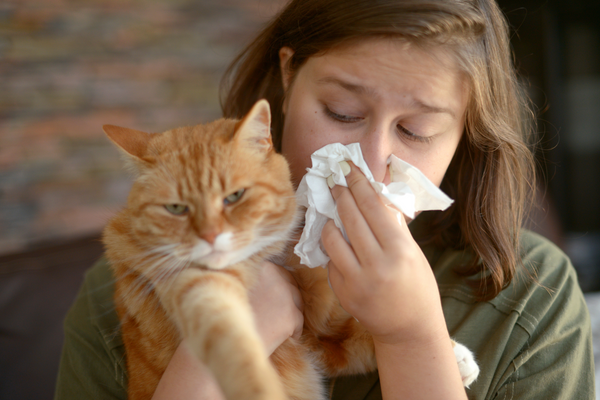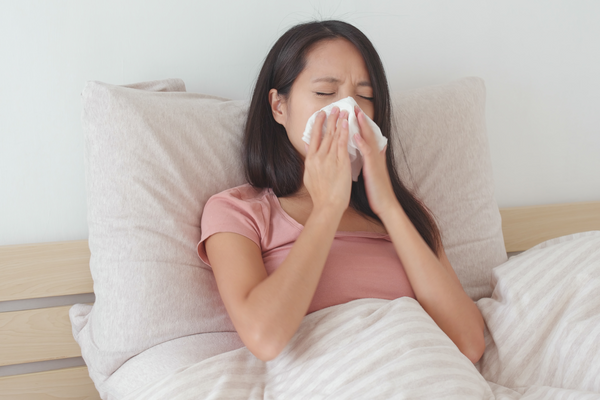Back-to-School Amid the COVID-19 Pandemic

This past spring, schools across the country abruptly shuttered as SARS-CoV-2, the novel coronavirus that causes the disease COVID-19, began its rapid spread. At the time, it seemed unimaginable that schools would stay closed for the remainder of the academic year. But now, all 50 states have begun to reopen, and we’re getting closer to the beginning of the 2020-2021 school year. This year, nothing about returning to school will be typical. Many schools in the nation’s larger districts are planning to start off the school year with online learning, and it’s still unclear when students and teachers will be back in classrooms. Other school districts plan to implement hybrid learning models that involve spending some days in the classroom and other days online. A few districts are determined for educators and students to return to school campuses 5 days a week.
On July 30th, Greenfield-Central Community Schools in Indiana, one of the first school districts in the country to reopen its doors and welcome back students during the COVID-19 pandemic, did not even make it through the first day without having to implement emergency protocol after the school was notified by the county health department that a student, who had sat in various classrooms, walked the halls, and socialized with other students, had tested positive for COVID-19. The district said that all areas of all schools are disinfected every night after school and special attention was given to the classrooms in which the infected student was present. The school district announced on Friday that they were planning to keep schools open.
After a spring semester of remote learning amid the spread of the virus, sending our children back to the classroom – whether they’re heading to kindergarten or high school – is daunting. Many European and Asian nations have been able to reopen schools safely after controlling the spread of the virus using tools such as widespread mask wearing, enhanced cleaning and disinfection protocols, widespread testing, and contact tracing.
The best way to ensure the safest back-to-school experience is to be prepared. While school leaders will have safety plans and protocols in place, there are some things parents can do to help ensure their children stay healthy:
Parents should develop a morning routine to take their child’s temperature and ensure that they don’t have a fever or any other signs of illness (sore throat, runny nose, cough, etc.) before sending them to school. If a child does have a fever, cough, or other symptom, they should be kept at home. Call your pediatrician right away if you believe your child may have an illness.

Schools will likely not be able to safely provide communal supplies for students, so it’s important that every child have their own set of of basic school supplies like pencils, crayons, pens, highlighters, notebooks, rulers, scissors, etc., so that they don’t have to share with other students and possibly spread germs. It’s also a good idea to provide your children with a bottle of hand soap and a box of tissues, as these items will likely be in short supply.
It’s important for children to have their own hand sanitizer in case they encounter a situation where hand-washing isn’t possible, such as in the classroom or on the school bus. According to the Centers for Disease Control and Prevention (CDC), hand sanitizer should be at least 60% alcohol to kill viruses and bacteria. Remind children to also wash their hands frequently with warm water and soap for at least 20 seconds. To get in the habit of washing their hands long enough, have your child sing “Happy Birthday” twice while they wash up.
In addition to hand sanitizer, add a travel-sized bottle of disinfectant to your child’s backpack so that they can disinfect high-touch surfaces, like desks, chairs, and any shared equipment, before using them. Vital Oxide is EPA-registered and approved for use against SARS-CoV-2. When using Vital Oxide, there is no need to wear safety gloves, or to rinse after applying. It’s colorless, odorless, and free from toxic chemicals or fumes. Simply spray Vital Oxide and let dry naturally to kill 99.999% of bacteria and viruses. Vital Oxide has long been used in school settings, childcare centers, and even in museums, like the South Florida Science Museum, to disinfect.

Probably the strangest new “supply” on everyone’s school shopping list this year is face masks. The CDC recommends all kids older than two wear a face mask in public to minimize the spread of the virus. And while the topic of masks has been hotly debated, there is growing scientific evidence supporting the efficacy of masks. One branch of evidence comes from laboratory studies of respiratory droplets and the ability of various masks to block them. An experiment using high-speed video found that hundreds of droplets ranging from 20 to 500 micrometers were generated when saying a simple phrase, but that nearly all these droplets were blocked when the mouth was covered by a damp washcloth. Another study of people who had influenza or the common cold found that wearing a surgical mask significantly reduced the amount of these respiratory viruses emitted in droplets and aerosols.
“Cloth face coverings are the best option for most children. Any child who can mask, should,” said Sara Johnson, associate professor of pediatrics and public health at Johns Hopkins Schools of Medicine and Public Health. “Now there’s some evidence coming out to suggest that masks may also provide some protection for the wearer, so they might be even more important than we first thought.”
Children should have at least one or two spares with them in case their mask gets dirty or breaks. Encouraging your kids to wear a face mask outside will encourage other preventative measures, like frequently washing their hands and social distancing. Before school starts, practice with your child putting on the mask and taking it off with clean hands. Make sure your children know to never trade or share their used mask with another child. Practicing mask etiquette is equally important if your children are participating in remote school, as they’ll need to wear one for trips outside the home.

Something else to consider as students head back-to-school is keeping our homes as clean and germ-free as possible. “When children return from school they should immediately sanitize their hands,” advises board-certified pediatrician Dr. Candice W. Jones . “Once at home, at the very least they should remove clothes/shoes and place them in the laundry or in a designated safe place for disinfecting. A shower would be great, but is not absolutely necessary.”
To help keep germs at bay, have your kids leave their school backpacks and shoes that they wear to school in a designated area, such as near the front door, when they return home from school instead of taking them into their bedrooms or other high-traffic areas in the house. Every day after school, spray backpacks and shoes (as well as any other items that your child took to school) with Vital Oxide to eradicate germs. Vital Oxide is gentle enough to be used on virtually any surface (except wool fabrics) without causing damage. Be sure to remove any dirt, dust, or grime prior to disinfection. Vital Oxide can also be used in this pre-cleaning process. Vital Oxide can also be added to laundry to disinfect. Simple add ½ cup - 1 cup of Vital Oxide (depending on the size of the load) along with your regular laundry detergent to the washing machine. Unlike bleach, Vital Oxide will not discolor fabric.
Bonus: Vital Oxide is also a powerful odor eliminator, so you can say goodbye to that stinky sneaker smell! Also be sure to use Vital Oxide to de-germ items like toys (including stuffed animals) that your child has taken to school. Lunch boxes should also be cleaned and disinfected with Vital Oxide on a daily basis.
Encourage your children to ask questions and express their concerns. Offer them emotional support and guidance, and provide them information about how to protect themselves against illness. Help to prevent stigma and discrimination by encouraging children to be kind to their peers and avoid stereotypes when talking about the virus. Above all, try to stay hopeful and optimistic. While the pandemic has been difficult for everyone, no doubt our children have been greatly affected and need our support than ever.
COVID-19 Informational Resources for Families & Schools
World Health Organization (WHO)
- COVID-19 Overview: Keep up to date on the latest information and resources from WHO.
- Key Messages and Actions for COVID-19 Prevention and Control in Schools: Learn about important information on COVID-19 for school administrators, teachers, staff, students, and parents.
U.S. Department of Education
- COVID-19 ("Coronavirus") Information and Resources for Schools and School Personnel: Read about information and resources for schools on COVID-19.
U.S. Centers for Disease Control and Prevention (CDC)
- COVID-19 Information Overview Learn more about COVID-19 symptoms, steps to protect yourself, and other resources.
- Reopening Guidance for Cleaning and Disinfecting Schools: Visit this CDC page for a plan that focuses on cleaning and disinfecting schools and public spaces that can also be applied to your home and business.
Final Thoughts
As families and school administrators plan for a safe and successful school year in these unprecedented times, we want to convey our best wishes. Rest assured, we will get through this together. From all of us at The Ecology Works, we wish you a happy, healthy, and safe school year.
If you have any questions about our products, please feel free to Contact Us or send us a message on Facebook.




